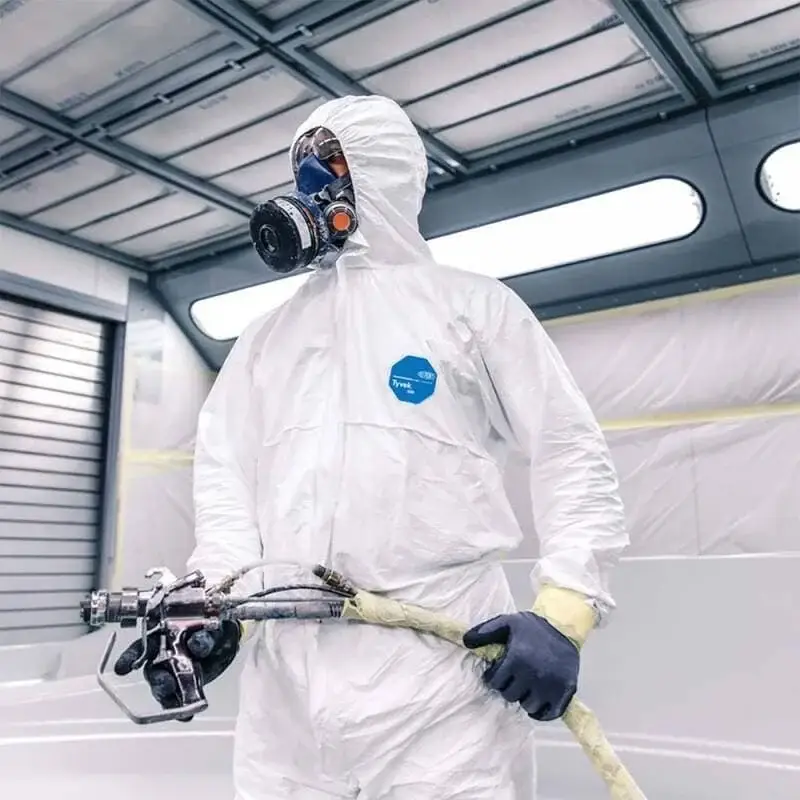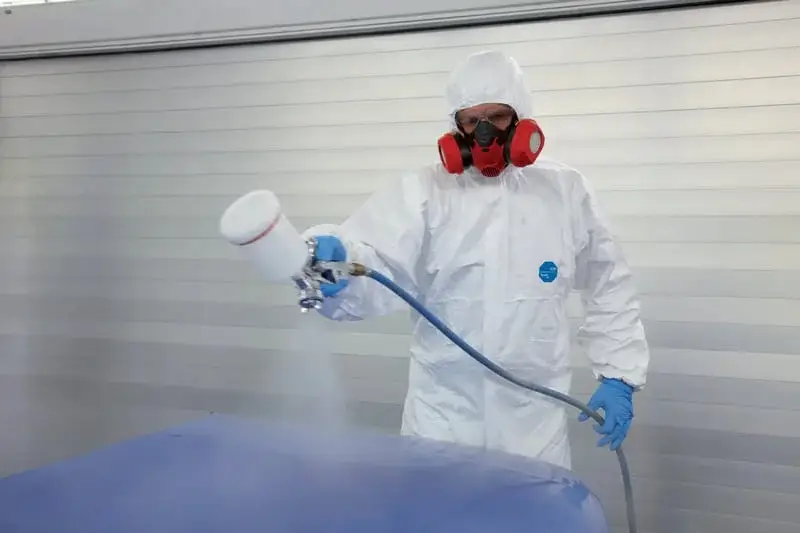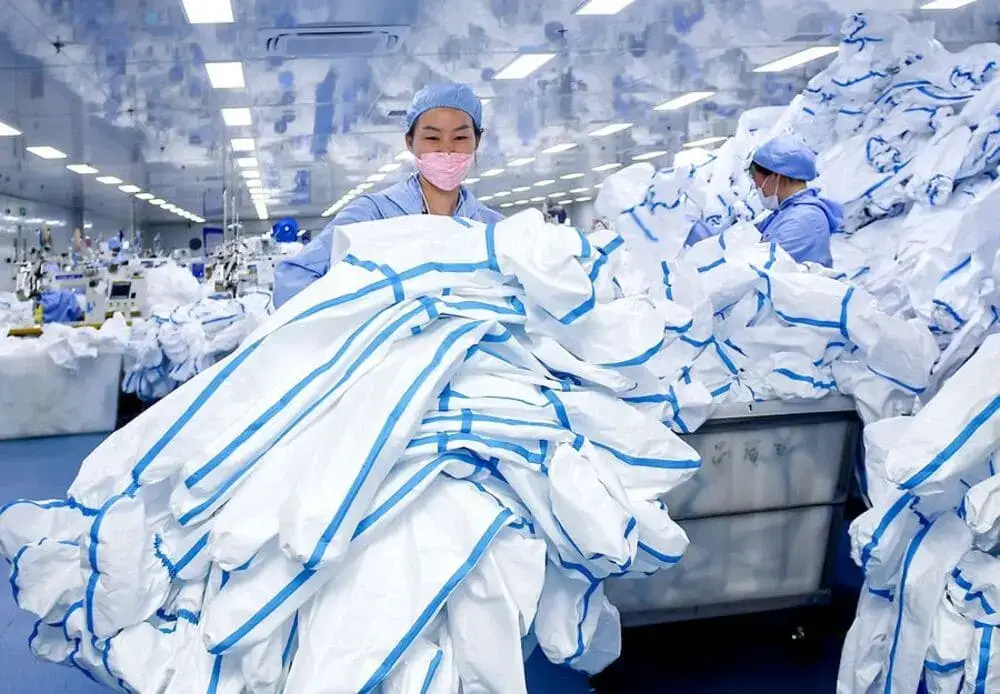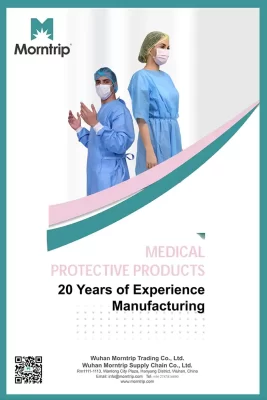Table of Contents
During the COVID-19 pandemic, CPE gowns stood out from the crowd of disposable gown products due to their highly favorable price and efficient production capabilities. Unlike more expensive disposable gowns, CPE gowns provide robust protection without breaking healthcare facilities’ budgets. CPE isolation gown is 100% fully automatic machine-made with minimal human involvement, which enables it to produce several times more than other types of disposable isolation gowns in emergencies. Their waterproof design and ability to prevent infectious droplet transmission made them an economical yet highly effective choice in the challenging landscape of pandemic-era infection control.
This blog will explore the key differences between CPE isolation gowns and other isolation gowns, to give you a deep understanding of the features, advantages, and important roles CPE gowns play in various industries.

What is CPE Gown?
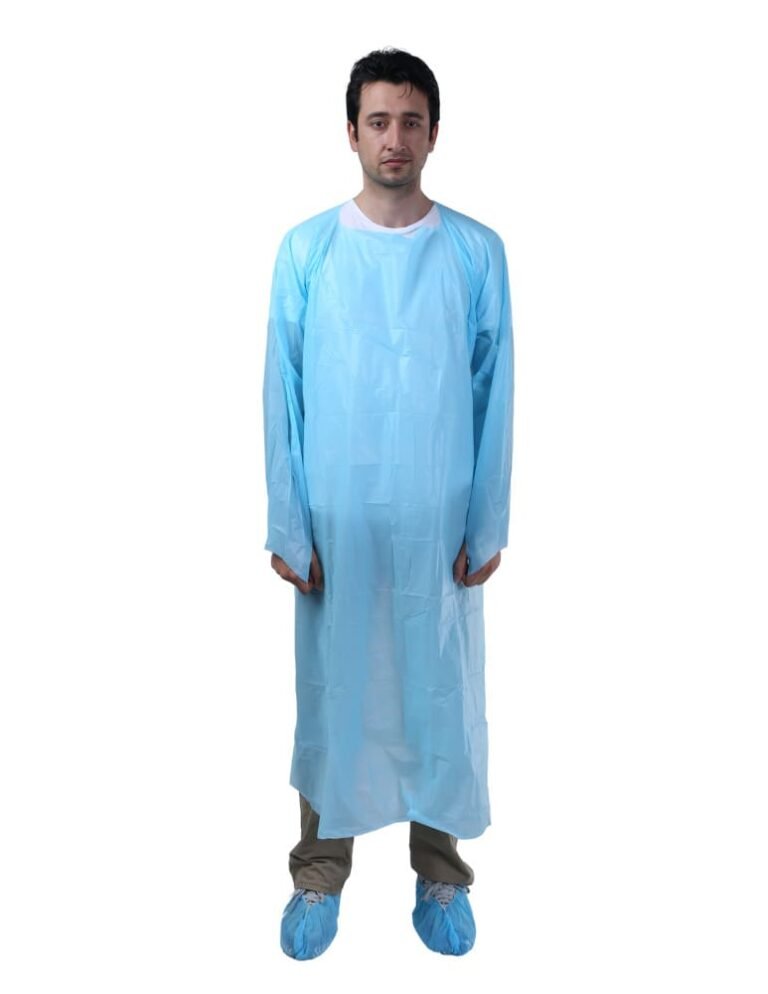
CPE gown is a type of disposable protective clothing, made of Chlorinated Polyethylene, primarily used in healthcare and other industries to prevent the spread of infections and protect against hazardous materials.
What is CPE Gown made of?
CPE gowns are made from chlorinated polyethylene (CPE), a type of thermoplastic elastomer created by chlorinating polyethylene. This material provides excellent strength and durability. It resists oils and chemicals effectively and performs well under high temperatures.
Key Features of CPE Gowns
Key Properties
- Waterproof: CPE isolation gowns are fully waterproof, so they are often be called “disposable waterproof gowns” or “impervious disposable gowns.”
- Durability: Compared to those nonwoven materials, which are widely used in manufacturing disposable gowns,CPE material is more durable, with better compression set, flame resistance, tensile strength, and abrasion resistance.
- Chemical Resistance: CPE material resists fluids and chemicals, making them ideal for healthcare and laboratory use.

Design and Features
- Coverage: CPE isolation gowns cover critical zones, including from the neck to the knees, and wrapping around to cover the back.
- Cuff Style: Thumb loops or elastic cuffs on the gowns prevent sleeves from sliding, offering better security than traditional cuffs.
- Ties: Neck and waist ties ensure a snug fit, similar to many isolation gowns.
Safety and Comfort
CPE gowns provide excellent protection without causing skin irritation. However, their impermeable design can reduce breathability, making them less comfortable in warm environments.
Key Applications of CPE Gowns

Healthcare
- Hospitals and Clinics: CPE isolation gowns protect healthcare workers from exposure to blood, infectious agents, and bodily fluids. They are crucial during surgeries and emergencies to ensure safety and reduce infection risks.
- Long-Term Care Facilities: In nursing homes and similar settings, these gowns help prevent infection spread and protect vulnerable populations.
Food Processing
In food production, CPE isolation gowns maintain hygiene by preventing contamination between workers and food. They are especially useful in high-risk areas like meat processing and dairy facilities due to their waterproof and splash-resistant features.
Laboratories
- Research Laboratories: In labs handling biological or chemical hazards, CPE gowns provide strong protection against spills and harmful substances.
- Pharmaceutical Labs: These gowns maintain sterile conditions, preventing germ transmission during pharmaceutical production.
Industrial Applications
- Chemical Plants: CPE gowns protect workers from chemical spills and hazardous exposure due to their high resistance.
- General Industry: These gowns are common protective gear, shielding workers from dust, irritants, and chemicals in various industrial environments.

CPE Gown Vs. Polypropylene Gown and SMS Gown
Fluid Resistance
- CPE gowns block liquids and particles effectively, they resist fluids, splashes, and harmful materials, ensuring safety in risky settings.
- Polypropylene (PP) Gowns resist fluids minimally and work well in low-risk areas with little chance of contamination. They are a budget-friendly option for non-critical or administrative tasks.
- SMS gowns are made of triple-layered nonwoven material, which combines Spunbond, Meltblown, and Spunbond layers for solid protection against fluids, blood, and germs. They are ideal choices for surgeries, isolation units, and areas needing advanced protection.
Durability
- The Chlorinated Polyethylene material ensures CPE Isolation Gowns are durable and resistant to rips, tears, and punctures. They can withstand long-time use and are easy to dispose of responsibly.
- PP Gowns are lightweight and breathable but less durable compared to CPE and SMS materials. They are not strong enough against tears and punctures, so they are not recommended in high-risk processing.
- SMS Gowns: Known for their excellent durability, resistance to tears and punctures, and high fluid resistance due to the multi-layer construction.
Comfort
- CPE material is soft and flexible, which makes CPE gowns lightweight, comfortable, and easy to move around in. They make less noisy and more comfortable for extended wear.
- Often made from 16-20 gsm PP nonwoven fabric, PP gowns are lightweight and breathable. However, they offer limited protection against liquids.
- SMS gowns are breathable, allowing air circulation and body heat to escape, making them comfortable for long wear despite their high protection level.
Cost
- CPE gowns are generally 30%-80% more cheaper than PP and SMS gowns, due to their less human labor invoved and higher production effience.
- Polypropylene gown is typically less expensive option, almost 70% cost as SMS gowns, making them suitable for low-risk settings or bulk purchases.
- SMS gowns are more expensive than PP and CPE isolation gowns. However, they offer high protection and durability, making them a cost-effective option for high-risk settings.
Applications
- CPE isolation gowns are versatile protective garments that play a vital role in healthcare, food safety, industrial environments, and emergency response situations by providing effective barriers against contaminants and hazardous materials.
- Polypropylene gowns are suitable for low-risk settings such as administrative tasks, patient transport, and other areas where the chance of fluid exposure is minimal.
- SMS gowns: Best suited for high-risk settings such as operating rooms, isolation wards, and areas where maximum protection against fluids and pathogens is required.
Comparison Table
| Characteristic | CPE Gowns | PP Gowns | SMS Gowns |
|---|---|---|---|
| Material | Chlorinated Polyethylene | Polypropylene | SMS |
| Fluid Resistance | 100% resistant to fluids | Minimal resistance | Moderate resistance |
| Durability | Highly durable | Less durable | Good durability |
| Comfort | Soft, flexible, lightweight and comfortable. | Lightweight and breathable. | Comfortable but heavier |
| Cost | Most affordable | Cheaper than SMS gowns | Most expensive |
| Ideal Applications | Healthcare, food safety, industrial environments, emergency response | Administrative tasks, patient transport, low-risk settings | Operating rooms, isolation wards, high-risk areas requiring maximum protection |
CPE gowns stand out as a cost-effective, durable, and highly protective option compared to other isolation gowns like PP and SMS. Their waterproof design, chemical resistance, and versatility make them indispensable in healthcare, food processing, laboratories, and industrial settings. While other gowns have their specific advantages, CPE gowns provide a perfect balance of affordability and protection, making them a top choice for many industries.
At Morntrip, we specialize in high-quality CPE gowns tailored to your needs. Our professional team is ready to assist you in sourcing the right Medical Gowns. Contact us today for expert support, and let us provide free samples so you can confirm the quality before placing an order. With our experience and dedication, we ensure you receive reliable, cost-effective solutions for your PPE needs.

